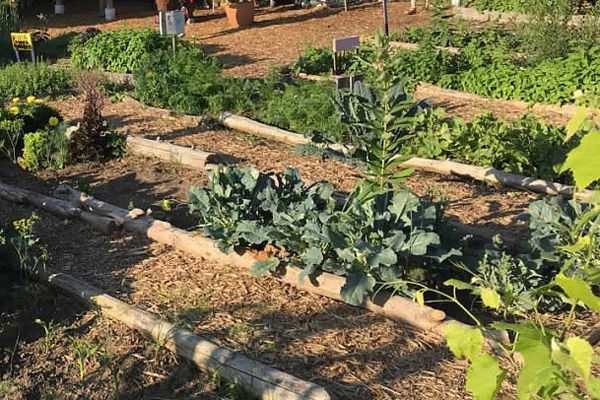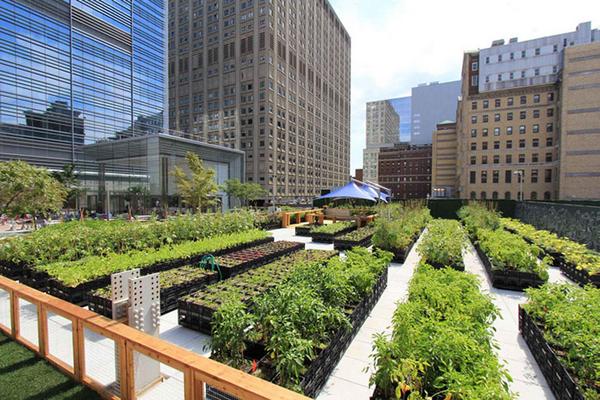The Ultimate Guide To City Blooming
Table of ContentsSome Known Questions About City Blooming.Things about City Blooming10 Simple Techniques For City Blooming7 Simple Techniques For City BloomingWhat Does City Blooming Do?
Intrigued in growing food to buy in the City of Chicago? Assuming about beginning an area garden? Modifications to the Chicago Zoning Statute allow farming usages like neighborhood gardens and city farms in several parts of the city. Below is a list of regularly asked concerns pertaining to the rules and guidelines that cultivators should think about when planning an urban farming task.
The zoning change does not customize any various other codes dealing with composting, structure authorizations, purchasing or renting City owned property, organization licenses or environmental contamination. There are existing codes that control these problems and they remain completely effect and might apply to your project. Area gardens are commonly possessed or handled by public entities, civic companies or community-based organizations and preserved by volunteers.
Urban ranches grow food that is meant to be offered, either on a not-for-profit or for-profit basis. As a result of their business function, urban farms need a business certificate. Yes. An area garden is allowed to market surplus produce that was grown on site if the sales are accessory or secondary to the yard's key purpose defined over.
The City Blooming Ideas
The quantity of compost material can not go beyond 25 cubic backyards at any kind of offered time according to the standards in 7-28-715 of the City's Municipal Code. Since the soil at most new yard websites requires modifying, garden compost, dirt, wood chips, or various other materials can be obtained to construct or enhance the expanding room.

If a building authorization is required after that the hoophouse will certainly be considered an accessory building. You can discover even more about the structure authorization demands by speaking to the Division of Structures. The 25,000-square-foot size limit is intended to protect against a single area garden from controling a given block or detracting from the block's existing residential or commercial character.
The limit does not apply to yards situated in Public Open Area (POS) areas. Can there be even more than one neighborhood garden that is 25,000 square feet on a solitary block? Yes. The dimension restriction puts on private yards, not to private blocks. No. Secure fencing is not needed, however, yards that have huge auto parking locations might be required to install fence or other landscape design features.
City Blooming - Truths
B1 & B2 areas require that all industrial usage tasks be conducted inside your home. Is secure fencing needed for urban ranches? Fences may be called for, along with landscape design and testing, for certain car park locations and exterior job or storage areas depending on area and the particular activity taking place.
Urban farms need structure permits and zoning approvals prior to building (eco-friendly practices). Other types of city review might be needed depending on particular frameworks, activities, size, landscaping, licensing, public health and stormwater management issues.
Yes. The kind of certificate is determined by what is occurring at the site. The Department of Company Affairs and Consumer Protection can assist identify the particular kind of business license that's required. Yes. Off road vehicle parking is needed for the majority of business jobs in Chicago. The required number of garage is based upon the variety of workers working on website and not the square video footage of the growing room.
City Blooming Can Be Fun For Everyone

An urban farm can offer garden compost material created on site, nonetheless, the procedure needs to abide with the policies in 7-28-715 of the Chicago Municipal Code. Aquaponic systems are enabled indoors on city ranches in numerous zoning areas.
Up to 5 hives or colonies of honey might be maintained as an accessory use. Nonetheless, beekeepers should sign up with the Illinois Department of Agriculture. For more details regarding the proposed zoning amendment you might get in touch with the Division of Housing and Economic Advancement, Bureau of Preparation and Zoning at 312.744.8563.
Farming in cities and city areas An urban farm in Chicago. Urban farming refers to different practices of cultivating. https://www.slideshare.net/danielnold94107, handling, and his explanation distributing food in urban areas. The term additionally relates to the area activities of pet husbandry, aquaculture, beekeeping, and horticulture in a city context. Urban farming is identified from peri-urban agriculture, which happens in backwoods beside suburbs.
The Main Principles Of City Blooming
It can include a motion of natural cultivators, "foodies" and "locavores", that look for to develop social networks based on a shared ethos of nature and neighborhood holism. These networks can establish using formal institutional assistance, ending up being integrated into local town preparation as a "transition community" motion for sustainable metropolitan advancement.
Some of the very first evidence of metropolitan agriculture comes from Mesopotamia.